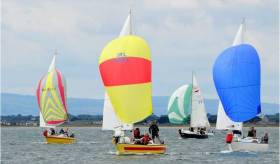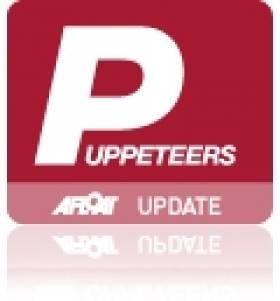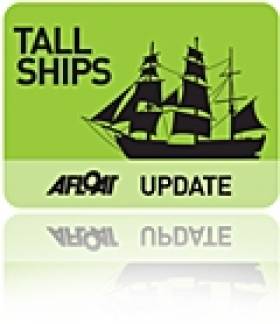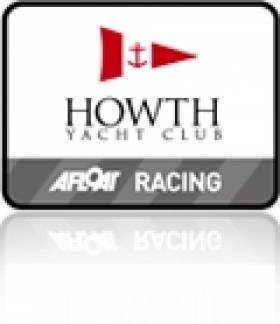Displaying items by tag: Puppeteers
Harlequin Rules Howth Yacht Club 14–Boat Puppeteer Fleet
The Sutton Cross Pharmacy 2016 Puppeteer National Championships was won by Dave Clarke & Liam Egan and crew on “Harlequin” following two days of intense racing at Howth Yacht Club this weekend. They managed to beat 2014's winning boat - Colin and Kathy Kavanagh's “Blue Velvet” by the narrow margin of one point. The handicap prize went to Ciaran McAuliffe and crew on “Arcturus” who's two point win from second placed “Papagena” (Kieran Barker) earned them the silverware this year.
The six-race championships was always going to reward the most consistent results from the 14-boat fleet. A mix of light and patchy conditions on Saturday produced four different winners from the four starts, with some of the pre-race favourites well out of the reckoning prior to the Sunday starts. Mindful of forecast light conditions on Sunday, National Race Officer Harry Gallagher went for the option of a fourth race on the Saturday afternoon. Sunday’s two races were sailed in light but steady breezes and produced some great tacking duels and very close finishes throughout the fleet. Racing was completed at 14.00 approx. and was followed by prize giving before the tea-time celebrations in the clubhouse.
Winning helm Liam Egan paid tribute to all aboard “Harlequin”, congratulated them for their expertise and said that their contribution 'made all the difference.' He singled out the battle they had had with “Blue Velvet” and thanked them for their sportsmanship on the water. Celebrations continued long into the night……….
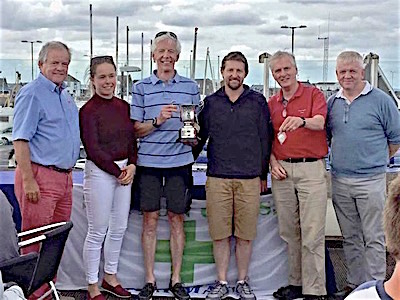 Commodore Berchmans Gannon (left) and Puppeteer Class captain Kieran Barker (right) present the trophy to Liam Egan while Dave Clarke shows off his gold medals!
Commodore Berchmans Gannon (left) and Puppeteer Class captain Kieran Barker (right) present the trophy to Liam Egan while Dave Clarke shows off his gold medals!
Eclipse Wins Puppeteer Nationals at Howth
#puppeteers – Robin Hegarty sailing Eclipse won the Puppeteer National Championships at Howth Yacht Club yesterday but only by half a point margin with former IDRA 14 champion Terry Harvery second. The Sutton Cross Pharmacy event attracted 17 entries. Full results downloadable below.
Howth Yacht Club to Officiate Tall Ships Send-Off on Sunday
#TALL SHIPS - Howth Yacht Club has announced that its vessels and race management teams have been asked to provide the official send-off for the Tall Ships Races fleet, which will take place in the centre of Dublin Bay at 6pm this Sunday.
HYC's members will be making a beeline for the bay after the completion of this weekend's Puppeteer National Championships in Howth - not to mention the spectcle of the Parade of Sail which kicks off at 1pm. HYC suggests the Howth Head cliff path between the summit and Redrock as a prime spot to watch the tall ships depart.
The club also urges members who wish to sail to the Liffey to see the Tall Ships Races fleet tomorrow to observe Dublin Port's notice to mariners for the festival.
Sightseeing craft will only be allowed past the Eastlink bridge for no more than 30 minutes at 10am, 12pm, 3pm and 7pm and may only navigate the Liffey as far as the Samuel Beckett Bridge. Extra toll bridge opening times may be added as demand dictates.
Dedicated escorting craft will be on hand to ensure a smooth procession. Sightseeing craft will not be allowed to go alongside the berths or vessels in the Tall Ships fleet, and no personal water craft such as Jet Skis or kayaks will be permitted.
Full details are included in the Dublin Port Company Notice to Mariners No 16 of 2012.
May tops the HYC Puppeteers
Gareth May was top of the Puppeteer's in Howth Yacht Club last night. Second was Trick or Treat (A.Pearson) and third the Clarke/Egan partnership sailing Harlequin. Dan O'Grady won the Etchells class. More results here:
TUESDAY SERIES 2 (RACE) 22/06/2010 Puppeteer SCRATCH: 1, Ibis G May; 2, Trick or Treat A Pearson; 3, Harlequin Clarke/Egan; Squib SCRATCH: 1, Whipper Snapper M Cantwell; 2, Astrix M McGaughey; 3, Roxanne J Flynn; Etchells SCRATCH: 1, Kootamundra Wattle O'Grady/Reilly; 2, Fetching Quinn/O'Flaherty; 3, Jabberwocky S Knowles; SB3 SCRATCH: 1, Einstein's Nightmare J Wenski; 2, Dinghy Supplies S Murphy; 3, Lia D Barry; Puppeteer HPH: 1, Mr. Punch NiBhraonain/Wilson; 2, Apollo M & D Patton; 3, Sanderling D & B Jennings; Squib HPH: 1, Astrix M McGaughey; 2, Whipper Snapper M Cantwell; 3, Puffin E Harte TUE + SAT SERIES 2 (RACE) 22/06/2010 17 Footer SCRATCH: 1, Deilginis Deilginis Group; 2, Rita Lynch/Curley; 3, Rosemary Curley/Jones; 17 Footer HCAP: 1, Rosemary Curley/Jones; 2, Anita Cassidy/Young; 3, Deilginis Deilginis Group


























